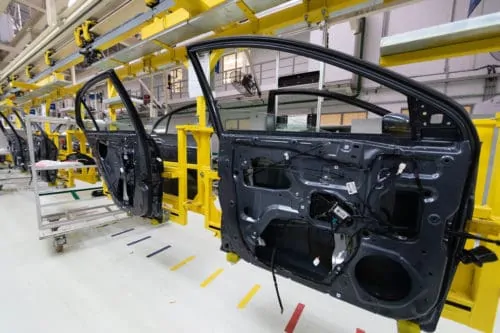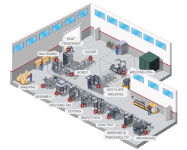
What are lead times? The lead time in manufacturing is the length of the production process, from start to finish. This time frame accounts for various phases, starting with a product order and following it from processing and production to shipping and delivery. As for how to calculate lead time, three main factors affect lead time as it relates to automation:
- Engineering time: This refers to the amount of time it takes engineers to design a piece of equipment, which can take weeks for simpler machines or months for complex designs.
- Manufacturing time: This is the time required to produce the physical equipment and its various parts.
- Third-party lead time: Another factor is the time it takes to receive parts from third parties. Longer lead times may warrant buying parts at the start of the project rather than the completion of the equipment’s design.
Learn more about how long lead times can occur, the benefits of actively working to reduce lead times, and tips to effectively do so.
What Causes Long Lead Times?
The main cause of long lead times with custom automation equipment is the sourcing requirements. Typically, the more complex the manufacturing project is, the longer the lead times as engineering and manufacturing times will increase. Additionally, specialty components will sometimes have long delivery times, thus affecting the overall project timeline.
Other factors impacting lead times include the following:
- Availability of special components
- Shortages of vital components like chips
- Any disruptions to the supply chain in related industries
- Import and export restrictions on certain components
Why Is It Important to Reduce Lead Times?
Reducing lead times offers several key benefits for manufacturers and customers alike.
Maintaining Customer Satisfaction and Keeping Their Business
Shorter lead times can provide the customer the flexibility required to deliver on a key project. Additionally, shorter lead times will increase a manufacturer’s ability to meet key deadlines and avoid penalties from the end customer.
Increasing Market Flexibility
Reduced lead times allow you to use and pre-position idle assets, culminating in reduced safety stocks for manufacturers. The ability to adjust to changing markets translates to increased revenue and the ability to continually improve operations for optimized efficiency.
Additional benefits of shorter lead times include:
- Boosted ROI through increased efficiency in your operation
- More buffer time to adapt to unanticipated changes in the market or operations
- Client capabilities to address OEM requirements
How to Improve Lead Times
To optimize lead times, it’s best to use off-the-shelf equipment that’s easy to obtain with ample availability. Custom or specialized parts will take longer to obtain. For example, it can take up to 27 weeks to receive a highly specialized servo press from some brands, which is why Advanced Manufacturing Development (AMD) will always provide equivalent alternatives that meet the required specifications if we find the component lead times are impacting the machine delivery negatively.
Keep in mind that a product’s particular lead time varies by supplier. Depending on the lead time you’re likely to see with a particular vendor, AMD will also look for products and respective suppliers that offer the shortest lead time.
General Strategies for Lead Time Reduction
There are a few key strategies you can implement to reduce lead times. The first is selecting components that are offered by local representatives in your location. Another option is working with a company like AMD that has the resources and direct relationships with suppliers to import international components as quickly as possible and purchases both off-the-shelf parts and custom-built components like specialized presses or feeding systems, whichever would be the fastest. Ultimately, optimized production planning and scheduling are imperative for boosting efficiency and minimizing delays so you can receive each part when you need it.
What Components or Machines Increase Lead Times?
When selecting components or equipment for your operation, various factors may increase lead times. As discussed, any machine or part customization will equate to longer lead times. Purchasing from American brands can shorten lead times, as companies in Japan, Germany, and certain other countries often take longer. That said, choosing equipment solely on lead times isn’t the best strategy. The experts at AMD can assist you in your selection process.
Contact AMD for Help Reducing Your Lead Times
Looking for solutions for your project that shorten automation lead times? The AMD team is here to meet your needs with high-quality automation solutions emphasizing reliability, safety, and profitability within your budget and time frame. Whether you need automation for assembly and welding, robotic cells, testing systems, or other processes and equipment within your manufacturing operation, we have the resources and expertise to provide you with the answer to your production challenges.
Contact us to learn more about how we can support your goals, or request a quote today.

